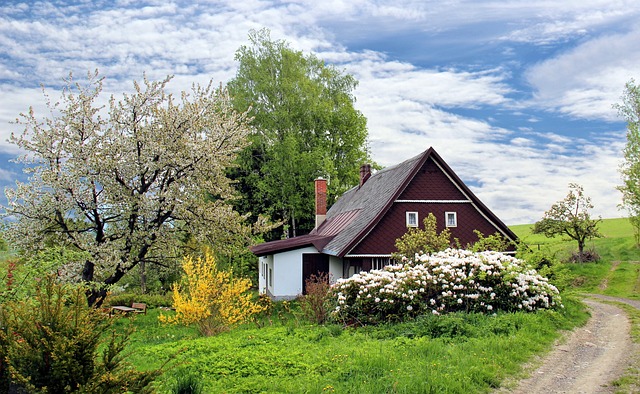Exploring the Potential for Constructed Wetlands in Septic Systems
goldenexch99, cricbet99 club.com, king567 login:Constructed wetlands are gaining popularity as a sustainable solution for wastewater treatment, and their potential in septic systems is worth exploring. In this article, we will delve into the benefits of using constructed wetlands in septic systems, how they work, and their effectiveness in treating wastewater.
What are Constructed Wetlands?
Constructed wetlands are engineered systems that mimic natural wetlands but are specifically designed to treat wastewater. They consist of shallow ponds or channels filled with wetland plants, such as cattails and bulrushes, along with gravel or other porous media. The plants and microorganisms in the wetland help to break down pollutants and remove nutrients from the wastewater, resulting in cleaner water.
The idea behind using constructed wetlands in septic systems is to provide a natural and environmentally friendly way to treat wastewater before it is discharged into the environment. Traditional septic systems rely on anaerobic processes to break down waste, which can be inefficient and can lead to the release of harmful pollutants into the soil and groundwater. Constructed wetlands offer a more sustainable alternative that can effectively treat wastewater while also providing other environmental benefits.
Benefits of Constructed Wetlands in Septic Systems
There are several advantages to using constructed wetlands in septic systems:
1. Improved water quality: Constructed wetlands are highly effective at removing pollutants and nutrients from wastewater, resulting in cleaner water that is safe to discharge into the environment.
2. Sustainable treatment option: Constructed wetlands rely on natural processes to treat wastewater, making them a more environmentally friendly alternative to traditional septic systems.
3. Habitat creation: Wetlands provide habitat for a variety of plant and animal species, increasing biodiversity and supporting ecosystem health.
4. Low maintenance: Once established, constructed wetlands require minimal maintenance, making them a cost-effective option for wastewater treatment.
How do Constructed Wetlands Work in Septic Systems?
In a septic system with a constructed wetland, wastewater from the house flows into a septic tank where solids settle out and are broken down by anaerobic bacteria. The liquid effluent then flows into the constructed wetland, where it passes through the gravel or other media and comes into contact with the wetland plants.
The plants and microorganisms in the wetland help to remove pathogens, nutrients, and other pollutants from the wastewater through a combination of physical, chemical, and biological processes. The roots of the plants provide a surface for beneficial bacteria to grow, which further aids in the breakdown of pollutants.
As the water moves through the wetland, it is purified and can safely be discharged into the environment or into a drain field for further treatment. The wetland also helps to recharge groundwater and replenish aquifers, contributing to overall water conservation efforts.
Effectiveness of Constructed Wetlands in Septic Systems
Studies have shown that constructed wetlands can be highly effective at treating wastewater in septic systems. They have been proven to remove a wide range of contaminants, including pathogens, nutrients, and heavy metals, at rates comparable to conventional treatment systems.
One study found that constructed wetlands could remove up to 90% of nitrogen and phosphorus from wastewater, significantly reducing the risk of nutrient pollution in water bodies. Another study demonstrated that wetlands could effectively remove pathogens such as E. coli and fecal coliform bacteria, making the treated water safe for discharge.
In addition to treating wastewater, constructed wetlands can also improve soil quality and enhance biodiversity in the surrounding area. The plants and microorganisms in the wetland help to break down organic matter and cycle nutrients, creating a healthier ecosystem overall.
Overall, constructed wetlands have been shown to be a sustainable and effective solution for wastewater treatment in septic systems, offering numerous environmental benefits and helping to protect water quality.
FAQs
1. Are constructed wetlands expensive to install?
Constructed wetlands can be more cost-effective than traditional septic systems in the long run, as they require less maintenance and provide additional environmental benefits.
2. Do constructed wetlands require a lot of space?
The size of a constructed wetland will depend on the volume of wastewater being treated and the specific site conditions. In general, wetlands require less space than conventional treatment systems and can be designed to fit within existing landscapes.
3. Are constructed wetlands suitable for all types of septic systems?
Constructed wetlands can be used with a variety of septic systems, including both residential and commercial applications. They are a versatile option that can be tailored to meet specific treatment needs.
In conclusion, constructed wetlands offer a sustainable and effective solution for treating wastewater in septic systems. Their ability to remove pollutants, improve water quality, and support biodiversity make them an attractive option for homeowners and businesses looking to reduce their environmental impact. By exploring the potential for constructed wetlands in septic systems, we can move towards a more sustainable future for wastewater treatment.







